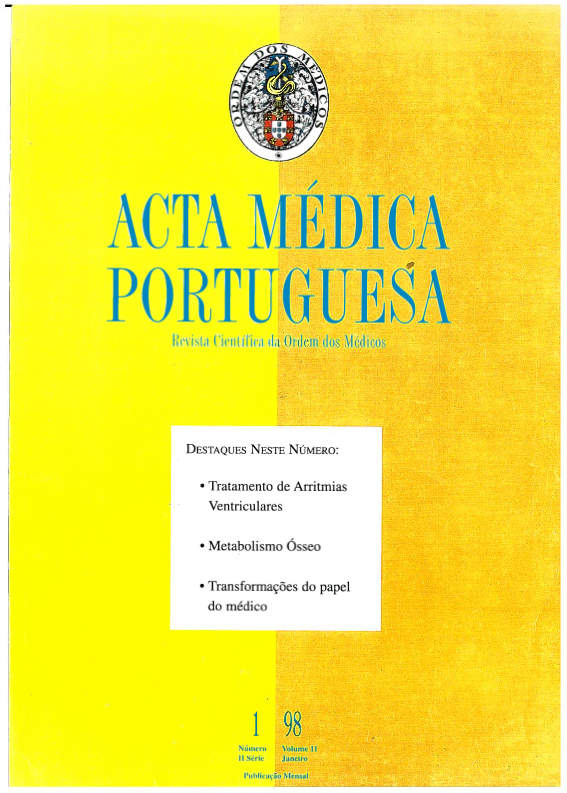Registo prospectivo de doenças cérebro-vasculares. Caracterização dos doentes e avaliação da metodologia.
DOI:
https://doi.org/10.20344/amp.2204Resumo
Hospital-based stroke data banks can contribute to a better management of stroke patients with consequent reduction of associated morbidity and mortality.The characterisation of stroke patients and validation of the hospital stroke registry.Hospital S.Pedro, Vila Real, a secondary neurological referral centre for 450.000 inhabitants of interior north Portugal.Analysis of data collected over one year of a prospective computerised stroke registry. Evaluation of completeness of the registry by independent analysis from emergency room data files and percentage of items entirely filled up.in a one year period were registered 349 patients (186 F; 163 M) with a mean age at stroke of 69 years. The majority (73.3%) lived in the hospital district. Most patients went directly to the hospital from their homes, and in the first 24 hours of symptoms onset. Cerebral infarction was diagnosed in 35.2% of patients, followed from lacunas in 24.6% and hypertensive haemorrhages in 22.3%. Arterial hypertension was found in 60.1% of cases, there were 11.4% of deaths and a Rankin score > 3 was present at hospital discharge in 39.5% of patients. There was a decrease in the register during the one-year period, evaluated comparing two months of emergency room files; we found a missing rate of protocols items varying from 0.8% and 8.8%.Hospital-based stroke data banks can provide the best available information on stroke patients characteristics and the presence of stroke risk factors. Registry protocols must be kept simple, easy to fill and periodically surveyed in order to lessen the number of missing items.Downloads
Downloads
Como Citar
Edição
Secção
Licença
Todos os artigos publicados na AMP são de acesso aberto e cumprem os requisitos das agências de financiamento ou instituições académicas. Relativamente à utilização por terceiros a AMP rege-se pelos termos da licença Creative Commons ‘Atribuição – Uso Não-Comercial – (CC-BY-NC)’.
É da responsabilidade do autor obter permissão para reproduzir figuras, tabelas, etc., de outras publicações. Após a aceitação de um artigo, os autores serão convidados a preencher uma “Declaração de Responsabilidade Autoral e Partilha de Direitos de Autor “(http://www.actamedicaportuguesa.com/info/AMP-NormasPublicacao.pdf) e a “Declaração de Potenciais Conflitos de Interesse” (http://www.icmje.org/conflicts-of-interest) do ICMJE. Será enviado um e-mail ao autor correspondente, confirmando a receção do manuscrito.
Após a publicação, os autores ficam autorizados a disponibilizar os seus artigos em repositórios das suas instituições de origem, desde que mencionem sempre onde foram publicados e de acordo com a licença Creative Commons









